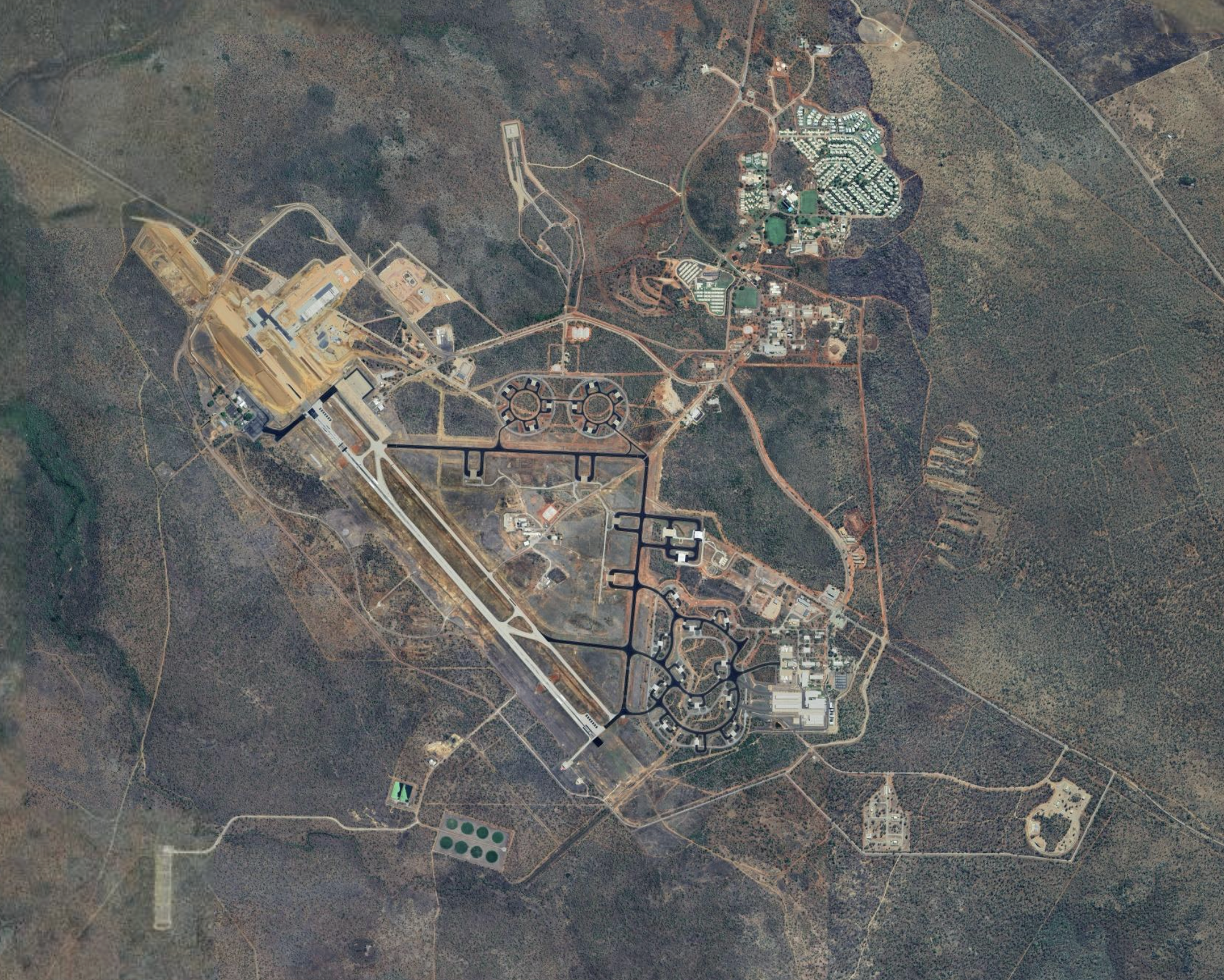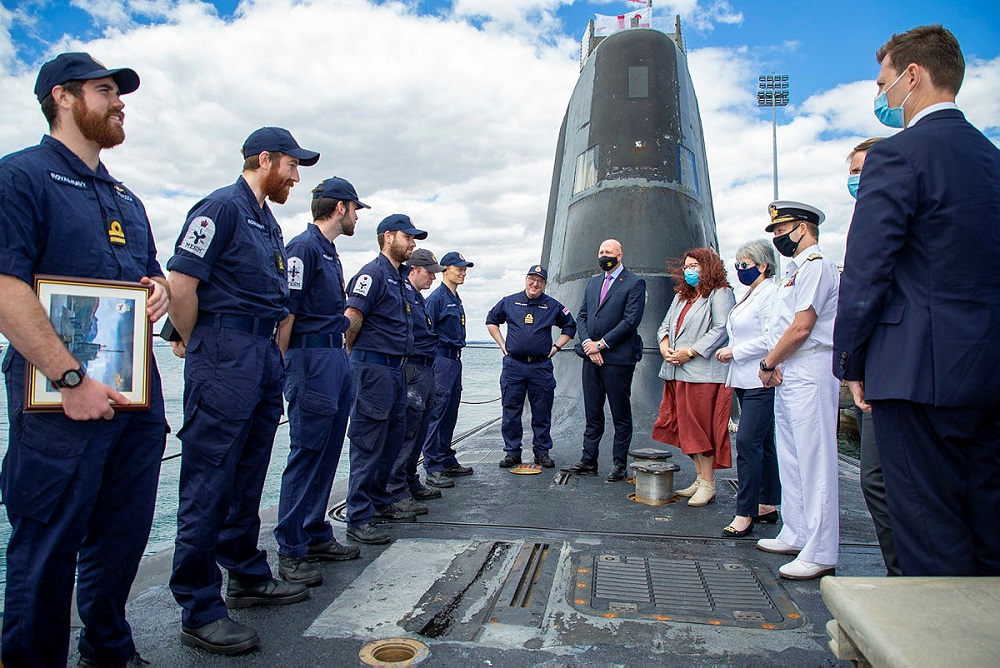
Imagine that this scene never took place. Imagine that the government of William Pitt the Younger decided in 1786 not to send the First Fleet to Botany Bay but instead to the other site for a penal colony that it was considering, Das Voltas Bay in present-day Namibia.
Would the Indigenous people of the Australian continent and their lands have been left undisturbed? Or would Europeans have inevitably arrived at some later point? Instead of a British colony, might several different colonies have been established under Britain, France, The Netherlands and Spain, each of which had, at various times, explored the continent’s coastline and its surrounding seas?
We assume the present was always going to be. That the past was destined to lead to the inevitable present. Counter-factual thinking prompts us to examine alternative historical timelines to better understand the contingent choices, forgotten circumstances and patchwork of occurrences that constitute the history of the present.
Those who consider Australia Day to be ‘invasion day’ have to ask: had the British not arrived in 1788, would there not have been an ‘invasion’ later? It would have been a different ‘invasion’ – possibly less violent, possibly more violent – but nonetheless it still would have led to the dispossession of the Indigenous people. That is not to justify dispossession but to better understand it in historical terms.
Those who celebrate the day have to ask: is the Australia that has emerged across the course of almost 250 years the only possible version of Australia that might have come into being? Might other possibilities have played out?
Instead of Australia as we know it, might several nations today inhabit the continent, each with different histories, national cultures and geopolitical world views and strategic interests?
It is almost certainly the case that in every plausible alternative historical timeline, the land that is known as Australia was always going to be occupied by one or more of the European powers of the 19th century, in some form or another. When, by whom and how is not certain. We will never know because history is run only once.
Had the colony not been established in 1788, it is most likely that Britain would have occupied points on the eastern seaboard of Australia and perhaps on its northern coastline, probably within 50 years.
In this altered timeline, Talmage might well have painted the scene of the establishment of a British base in Sydney in 1838, as the first European settlement on the Australian continent. From that base, Britain could have challenged the Dutch in the East Indies and the Spanish Empire in the Pacific and South America, in the event of a war with either or both.
From Sydney and from other bases in Port Darwin, Singapore (colonised in 1824) and Hong Kong (colonised on January 26, 1841), Britain could have better protected its trade with China, which had to pass through or close to the Dutch East Indies.
In the event of war in the region, British ships sailing to and from China could have been routed around the east of Australia and protected by a Sydney-based fleet.
What of the western and southern seaboards in this altered timeline? Perhaps after the Napoleonic Wars France might have claimed the southwest and southern portions of the continent. In the real historical timeline, France was certainly interested in the possibility.
Concerned about French intentions, in 1825 Britain extended the western edge of its territorial claim to Australia from the 135th meridian to the 129th meridian. Afterwards, it claimed the rest of the continent when it established the colony of Western Australia in 1829. In an altered timeline, imagine the French tricolour being hoisted over the Swan River, perhaps also in 1838, as the British Union Jack was being raised for the first time over Sydney Cove.
Now let us change the timeline again by supposing that no occupation of the Australian continent had occurred in the days of sail. By the 1870s, when steamships were replacing sailing ships, especially after the opening of the Suez Canal in 1869, and when undersea telegraphy cables were being laid around the globe, the strategic value of a continentally sized territory located at the hinge of the Indian and Pacific oceans would have been irresistible to numerous European powers. Locations around the coastline of the Australian continent would have been occupied, if only for the purpose of coaling trading ships and warships, securing telegraph cable connection points and protecting sea routes.
A scramble for Australia might have taken place, as occurred in Africa during the 1880s, when the quest for empire was at its peak, and European powers were seeking to extend their reach to all quarters of the globe for resources, markets, bases and strategic advantage. It would be ahistorical to think the Australian continent would have been left undisturbed. By 1888, it would have been occupied, with its fate and that of its Indigenous people perhaps determined by negotiation among the imperial powers, as occurred in the case of Africa at the Berlin Conference of 1884-85.
If we take a step back and consider these alternative timelines, there is a strong case to be made that because settlement began when it did in 1788, Australia’s colonial-era development benefited from the fact it occurred under the protection of British sea power and with access to British capital and markets, when Britain was at the peak of its powers. Settlement in 1788, followed by exclusively British colonisation (and with no other flags flying over the continent), also meant that Australia’s development occurred within a single framework of British institutions – especially parliamentary democracy, responsible government and the common law.
Exclusively British colonisation, and the British territorial clean sweep of the entire continent that was achieved finally by way of the claim in 1829 to the western portion, meant there were no European co-inhabitants.
With no land borders with the colonies of other empires (imagine, for instance, a border on the 129th meridian between British Australia and French Australia), the six colonies were able to pursue political, economic and social development in a stable and peaceful environment, even when one allows for the violence of frontier clashes with Indigenous people. No wars were fought between the European powers on the Australian continent. The colonists did not have to fight for their independence or to create a unified nation.
It is little wonder that Douglas Pike titled his history of Australia, which was first published in 1962, The Quiet Continent.
That Australia is a nation for a continent, and a continent for a nation, is a direct legacy of 1788 and Australia’s political development in the 19th century, which of course culminated in Federation in 1901.
Having a single nation on the Australian continent is today a source of geopolitical strength. One might imagine, for instance, the challenge that would be involved today in trying to shape a common defence and foreign policy at an imaginary Council of Australian Governments that was the supranational co-ordinating body for a confederation of four sovereign Australian nations, whose proceedings were conducted in English, French, Dutch and Spanish and whose deliberations were shaped by different and possibly conflicting strategic interests.
For all of its locational advantages, Britain never seriously exploited the strategic value of the Australian continent for the purpose of sea control or indeed for any other related purpose. Australia was never home to a significant British fleet. The closest that British sea power ever came was in the form of the great naval base in Singapore (1919-41) that was designed primarily to protect India against Imperial Japan. Australian governments of the interwar period naively hoped it also would provide for the naval defence of Australia. They were wrong.
Writing in 1883, British historian John Seeley famously said of the expansion of the British Empire that the “mighty diffusion of our race and the expansion of our state” had been undertaken indifferently, so much so that Britain had “conquered and peopled half the world in a fit of absence of mind”. His point was that while Britain had acquired a great empire, its thinking was still unimaginative, concerned more with the affairs of Europe than with the wider world, where the future would be determined by enormous political aggregations, such as the US and Imperial Russia.
Seeley argued a ‘Greater Britain’, by which he meant a transnational union of Britain, Australia, Canada, New Zealand and South Africa, could rival these two behemoths. Of course, this never came to pass. Instead, it was Australians themselves who led on local matters of strategy and defence, acting more independently than our national myths would have it.
For instance, in 1883 Queensland annexed New Guinea to thwart Imperial Germany’s interest. The British government disallowed this action, although it did establish a protectorate in New Guinea in 1884 that became a colony in the southeast portion of New Guinea in 1888. It was transferred to Australia in 1902. In 1889, Henry Parkes used a report on the parlous state of the defences of the colonies to drive the strategic case for Federation.

Alfred Deakin championed the building of a powerful Australian navy, for use in the Pacific and the Indian oceans, a cause that was given impetus after the victory of Imperial Japan over Imperial Russia in the war of 1904-05.
Australia attacked the Imperial German base at Rabaul in New Britain in 1914, as part of a broader campaign to force that country’s squadron out of the Pacific. In 1919, Billy Hughes aggressively pursued Australian interests at the Paris Peace Conference in 1919, prevailing on winning territorial control over New Guinea.
At least until the 1920s, Australians were more independently minded in strategic and defence affairs than we might think today.
However, and unfortunately, as a result of feeble political leadership in the interwar years, independent Australian thinking was not much in evidence at precisely the time when Australia was coming into its own as vital strategic space – that is, when sea and air power were coming together with the advent of aircraft carriers. As a result, by the time Talmage was painting his scene in 1937, Australia had become geopolitically vital in military terms, as was soon to be seen in the Pacific War.
Imagine in another timeline, where the French tricolour flew over the Swan River, what would have happened had French Australia in 1940 been the dominant power in the southern Indian Ocean? What if French Australia had gone with Vichy after the fall of France in June 1940, as had French Indochina? Britain would not have tolerated the resultant threat to India, Ceylon and Burma. Winston Churchill even might have decided to attack French Australia, probably from the British naval base in Ceylon. He did not shy away from doing so in the case of French Algeria in July 1940 and French West Africa in September 1940.

Today, Australia is one of the most vital strategic spaces on the planet, that being first demonstrated in the Pacific War of 1941-45. Its value as vital space started to be fully realised in the 1960s, with the establishment of US communications, space-based surveillance and intelligence facilities at North West Cape, Pine Gap and Nurrungar.
Today Australia is a bastion and a base at the hinge of the Pacific and Indian oceans, from where power can be projected into the rimlands of the Eurasian supercontinent and from where the Western Pacific and the Indian oceans can be guarded. Any conflict fought in the Indo-Pacific inevitably would involve calculations being made, by all protagonists, about how best to use Australia’s strategic space – and how best to neutralise it.
The “tyranny of distance” is one of the most famous and widely understood concepts in Australian historiography. For Australia, distance from war and conflict was for many years a blessing. It long gave us comfort, until the range of military systems and weapons started to eliminate the protective effects of distance. Imperial Japan’s aircraft carriers were the first to overcome the barrier of distance. Long-range bombers and missiles followed later. Today, we are in range – everywhere, all at once, physically and virtually. The sheltered land of our national imagination is no more.
In Richard III, Richard says: ‘All unavoided is the doom of destiny.’ Australia’s ‘doom of destiny’ is to inhabit vital strategic space, whether we like it or not. Our national imagination, which has deep roots in our colonial past and the long period of the solitude of the ‘quiet continent’, is today too conditioned by the comforting but obsolete notion that distance is our shelter and that troubles are far away. This is a strategic illusion.
Different timelines generate different fates. With a different past, there is a different present. The debate about Australia Day is, at its core, a debate about different pasts. Even if it came to be accepted that dispossession was inevitable – if not in 1788, then certainly by no later than the great European imperialist expansion of the 1880s – counterfactual analysis can still enrich the discussion by casting new light on questions such as why in the real historical timeline there was no sustained process of treaty-making with the Indigenous people, such as occurred in New Zealand. Can we imagine other timelines where sovereignty, land ownership and Indigenous rights were dealt with differently?
Or imagine Phillip had not been sent, and later occupation had been limited to the establishment of trading posts and naval bases around the coastline, with little or no settlement. Is it possible to imagine, in that alternative arc, that enough might have remained of the pre-colonial political, economic and social structures of Indigenous life, such that an independent Indigenous Australia might have emerged as a sovereign nation, as occurred when other colonies such as the Dutch East Indies, French Indochina and Malaya were granted their independence in the wave of post-war decolonisation?
The semiquincentenary of modern Australia will occur in 2038. The debate about Australia Day no doubt will continue to evolve. One thing about Australia Day is certain. The arc of history has seen Australia emerge and evolve as a single, unified political entity, inhabiting a continent on its own. Geopolitically, this blessing means that Australia, whose territory has been free of great-power conflict and whose people have been able to focus on national development in relative solitude and peace, is today in a position of strength to deal with its looming “doom of destiny”. History’s other arcs would have left us worse off.
That is worth celebrating on Australia Day.











